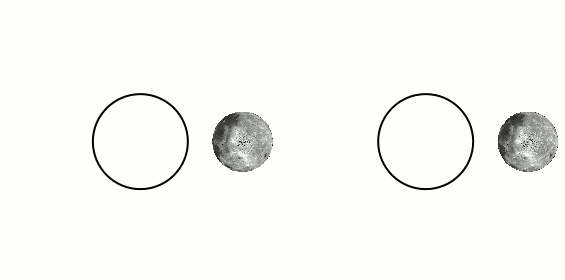We’ve all seen the Moon go through its phases over the course of a month’s time (give or take a day or two) as it travels in its orbit around the Earth, and you may have even seen the cool animation from the NASA Goddard Visualization Studio showing an entire year’s worth of lunar phases. But have you ever wondered what the Moon might look like from the other side as it goes around our planet? Thanks to a new visualization from NASA Goddard (using mapping data acquired by the Lunar Reconnaissance Orbiter) you can get a pretty good idea.
It wasn’t until fall of 1959 that we even knew what the Moon’s far side (sometimes erroneously called the “dark side”*) looked like. That year on October 7 the Soviet Luna 3 spacecraft captured the first images of the lunar surface that’s permanently hidden from our view.
Contrary to what some people think, the Moon does indeed rotate. In fact it’s this precise rotation rate that keeps one side – the side we all know and love – aimed at Earth while the much heavier-cratered (and mare-less) farside is always oriented outwards. Called tidal locking, it’s actually pretty common among moons in the Solar System, but rotation is most definitely occurring.
See the animation below for a demonstration of how that’s happening:

The NASA video above is public domain and can be downloaded here.
Source: NASA Goddard
*Despite what you may have heard from Pink Floyd, the Moon isn’t all dark. Outside of some permanently-shadowed craters at its poles, all surfaces of the Moon get illuminated by the Sun at some point during its 655.7-hour-long day.
Howdy Jason, I still enjoy spacing out here at your place. Thanks for the invite.
LikeLiked by 1 person
Thanks! Glad you like it!
LikeLike
Reblogged this on A Speculative Poetry Blog and commented:
Great video and images on how the Moon looks from the “dark side.”
LikeLiked by 1 person
super cool!
LikeLiked by 1 person
It looks brilliant, breath-taking. Always was curious about the far side of the Moon, the maria so distinguishes the near side that taking a look “at the back” was awesome. Plus the Earth and Sun also made it all the more real.
LikeLike